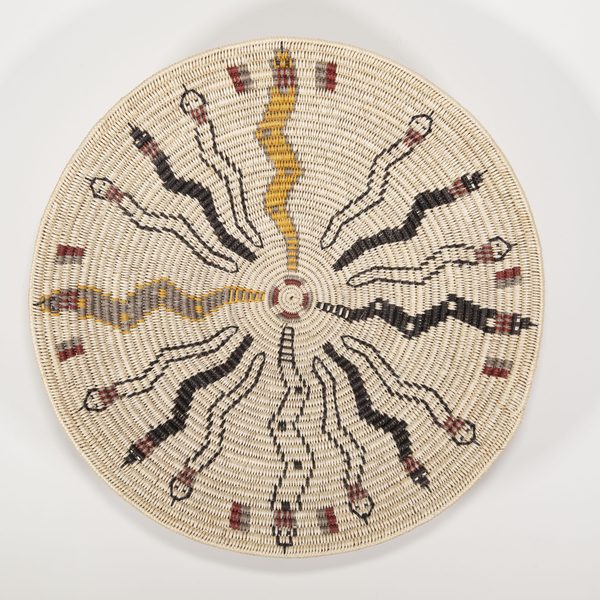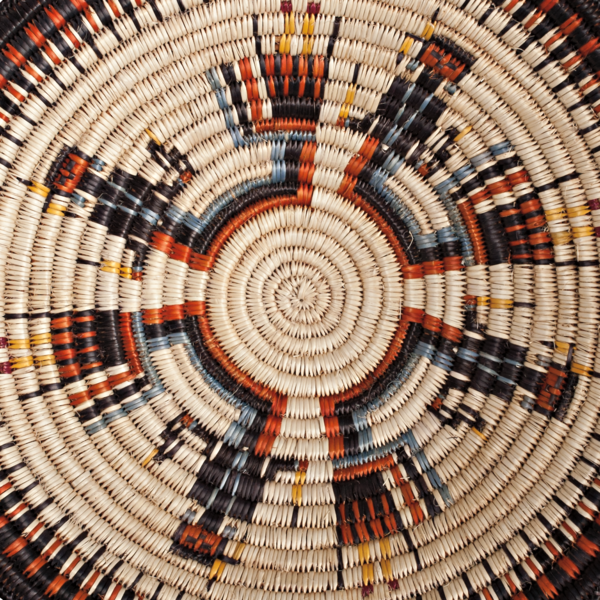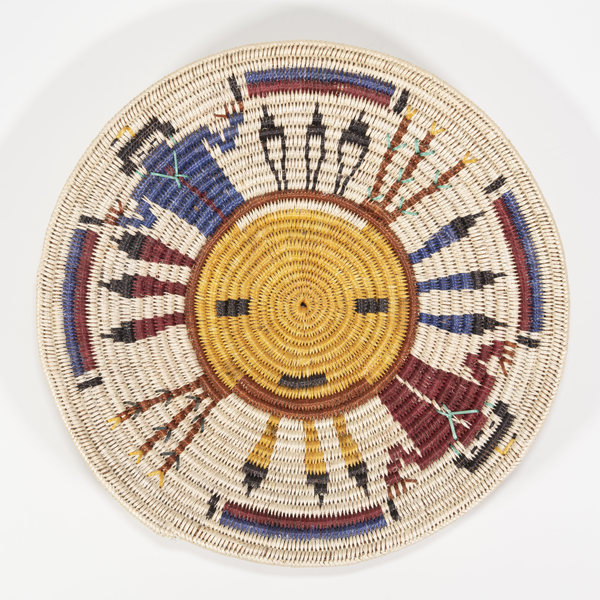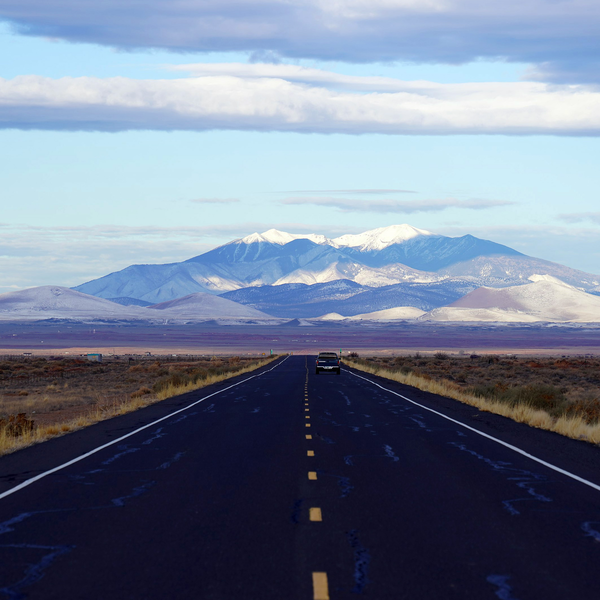Sand Paintings
Diné (Navajo) ceremonies include sets of actions and elements performed in sequence, often over many days, to bring about healing and the return of balance and harmony to individuals and the universe. Among the elements is the ritual creation of iikááh (sand painting), sometimes called dry painting, on the floor of the ceremonial hogan. Carefully trickling colored sand onto the earthen surface, the medicine person illustrates sacred places, stories, and beings from Diné belief and culture. Through the sand paintings, the Diyin Dine’é (Holy People) are called upon for help in the healing process. In fact, the Diné word for "sand painting" means “the place where the gods come and go.” All the instruments of the ceremony—from the hogan to the ceremonial basket, from the songs and dances to the sand painting—serve as powerful metaphors of the individual’s life, the history of the Diné people, and the land that is home.







